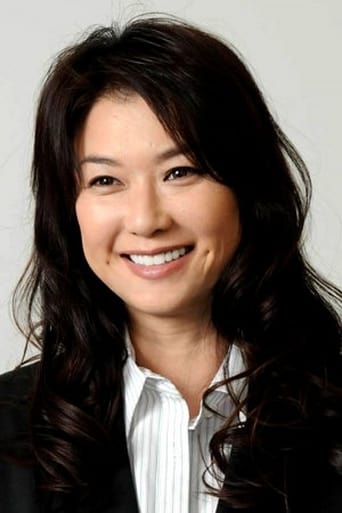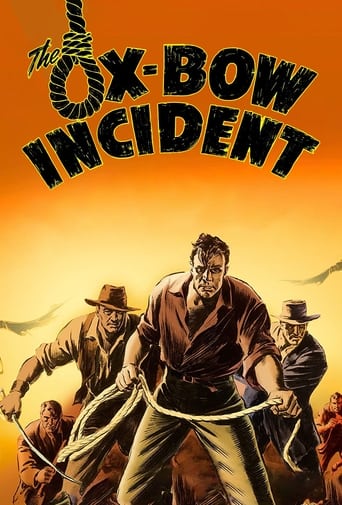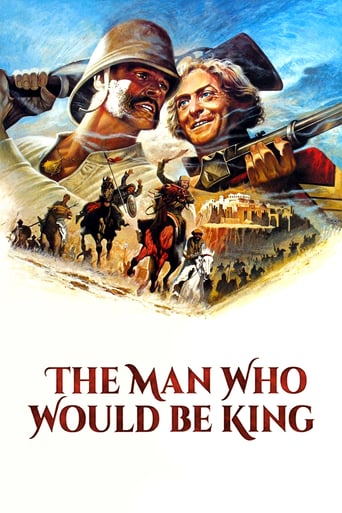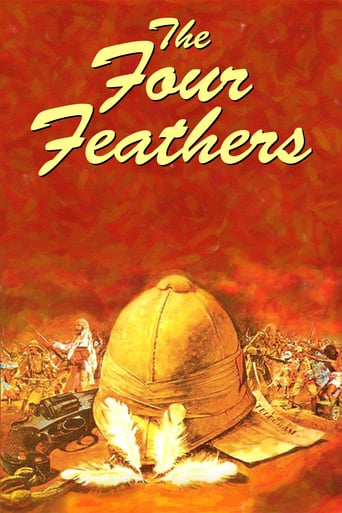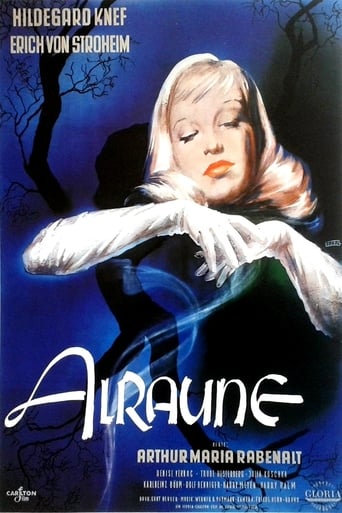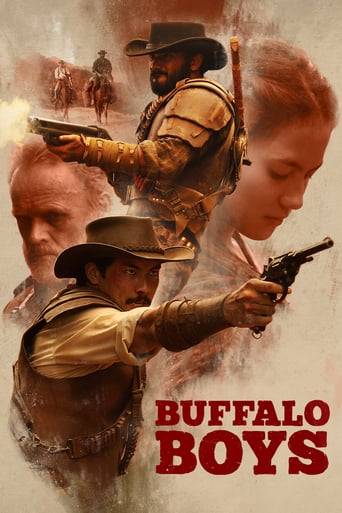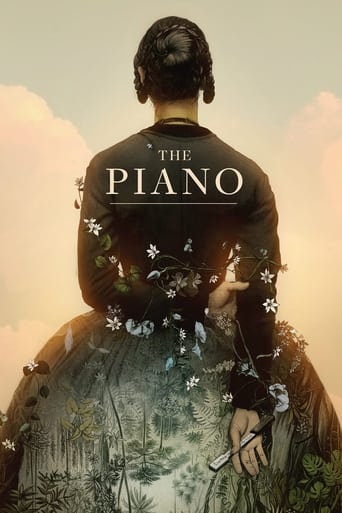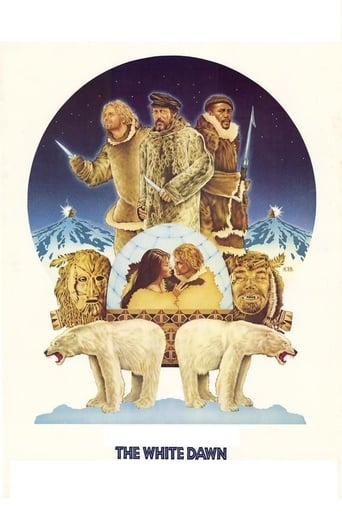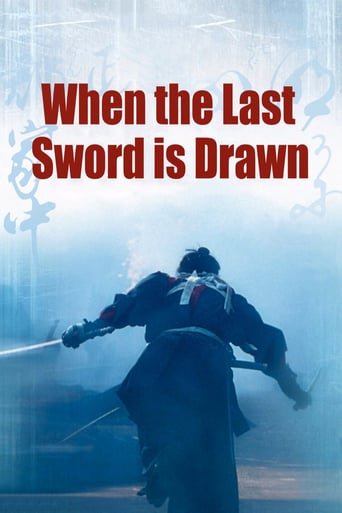
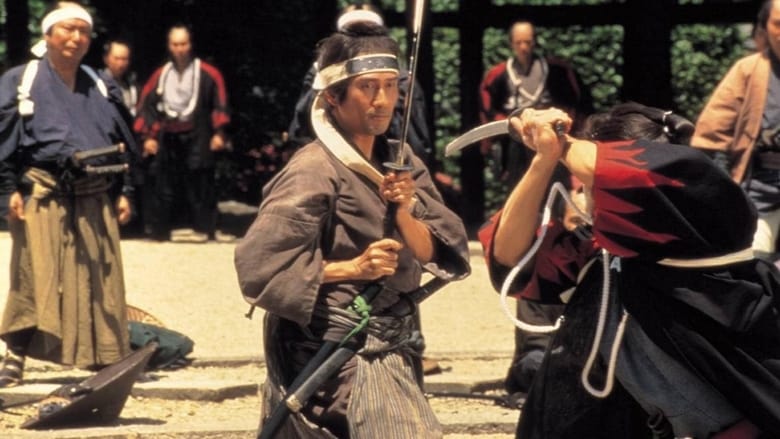
When the Last Sword Is Drawn (2003)
Kanichiro Yoshimura is a Samurai and Family man who can no longer support his wife and children on the the low pay he receives from his small town clan, he is forced by the love for his family to leave for the city in search of higher pay to support them.
Watch Trailer
Cast


Similar titles
Reviews
Pretty Good
Fresh and Exciting
As Good As It Gets
The first must-see film of the year.
"When the Last Sword is Drawn" is an intermittently interesting samurai film by director Yojiro Takita. It stars Koichi Sato as Saito Hajime, a samurai who works for the Shinsengumi, essentially a "police force" for Japan's shogun (heriditary military governors). Working alongside Hajime is Yoshimura Kanichiro (Kiichi Nakai). Pragmatic, Kanichiro sees his job in economic terms; a means of earning cash. Hajime, in contrast, believes in old-fashioned notions of feudal loyalty. As Hajime increasingly believes these notions to be morally untenable, he gradually becomes disillusioned. Filled with self-loathing, and finding no value in social customs, relations and traditions, Hajime spends Takita's film courting death.Typical of "revisionist" samurai movies, "When the Last Sword is Drawn" is sceptical of Edo-era values; it portrays a world in transition, anticipates the fall of the Edo period and attempts to sketch the economic realities of 19th century Japan. Like many contemporary samurai movies, it is marred by sentimentality, unnecessary flashbacks and an aesthetic which mistakes "slowness" and "countercliches" for depth. Scored by Joe Hisaishi.6/10 - Interested in Samurai films? See Kurosawa's "Ran", Okamoto's "Samurai Assassin" and "Sword of Doom", "47 Ronin", "Kiru", Hiroshi Inagaki's "Samurai Trilogy", "Goyokin" (1969), "Chushingura" (1962), and the great Masaki Kobayashi's "Samurai Rebellion" and "Harakiri". See too Yamada's "Samurai Trilogy" ("Twilight Samurai", "The Hidden Blade" and "Love and Honor"). For mindless gore, seek "13 Assassins" and the "Lonewolf and Cub" series.
The last days of an era are a common motif in Japanese samurai movies. Apparently there is something regarded as especially tragic in that process, and many movies try to show that. So there is nothing very particular about this movie, in terms of theme. The appeal is mostly in the peculiar main character.The problem is, the movie tries for too much. In the first 50 minutes we are totally engaged by Yoshimura, by his tensions with the samurai group he has joined, the curiosity about his motives, and the prospect of the civil war engulfing their lives. It is a fine drama, with the required sword-fighting on top. Yoshimura is a great character.But the last hour is just incredibly overlong and sentimental. The story goes in the right direction, and the fate of the characters seem a natural development of what was set up. So why make it so long and melodramatic?I think the director thought of this movie as more than another drama/adventure samurai. He wanted an epic. It does not work that way. There are only enough characters and plot for the drama of one man and his friends, not of the entire Japan. Thematically, nothing was added because of the long second half. No great insight about humanity, just a bunch of tears, snow, flowing water, and redundant sad speeches. The very same themes and plot resolution could have been done in 20 minutes instead of 60, and the film could wrap up in a nice 100 minutes, losing nothing. What a shame. In aiming for greatness, what could be a great movie was spoiled. Maybe you could watch it on DVD and play everything after the battle in 2x speed...
Just finished watching this movie and have to say that it was excellent.The movie is set in the last days of the Tokugawa Shogunate and the Boshin war. It revolves around a poor samurai who joins the Shinsengumi to provide for his family.The opening of the movie is a little slow and confusing but persevere and you will be greatly rewarded. Doing a quick read up about the shinsengumi will ease the confusion. This movie has all the elements of jidaigeki movie; samurai, honour, swordfights, duty.The ending may be a tad sentimental, it did bring a tear to my eye, but it does end the movie right.Highly recommended.
This picture was nice and refreshing. I'm always searching for a samurai movie with a budget, that wasn't shot with a digital camera (like all of the t.v. dramas) and that has nice swordplay. I found one. Like most Japanese movies, an American viewer tends to think they must be watching the director's cut but it's definitely worth the watch. I'm not sure who (or even if) I'm supposed to be rooting for. The Shinsengumi is mostly romanticized in Japan but this picture shows them doing what they did. House raids, executions, etc. all in the name of the shogun. If you enjoyed the type of movie that The Last Samurai aspired (and in some instances was successful) to be, then I recommend this movie to you.




